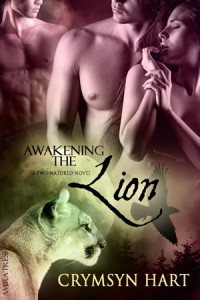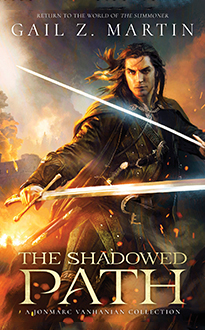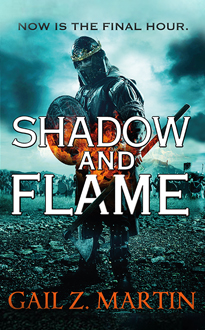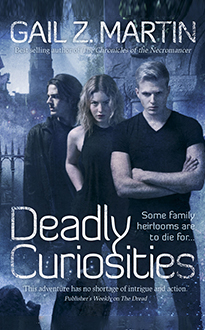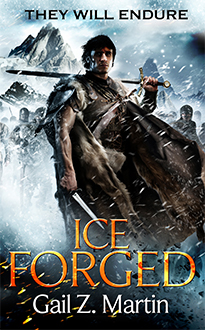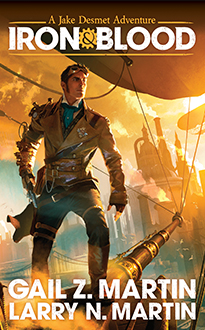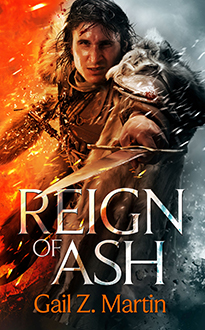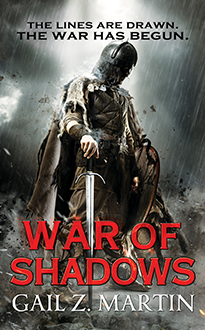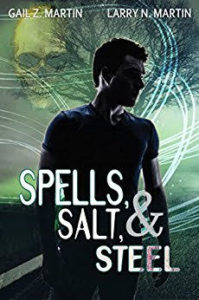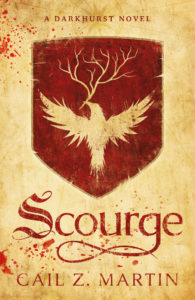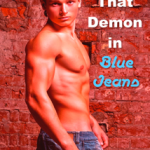 By Toni V Sweeney
By Toni V Sweeney
1. What is the title of your newest book or short story? What’s it about? Where can readers find it?
I’ve two novels coming out this month from Class ACT BOOKS….YAHOO! DOUBLE FEATURE!
One is a little fantasy called That Demon in Blue Jeans. It’s about a girl who asks the Devil to send her a “Bad Boy” and what happens when he does. It’s being re-issued by Class Act Books on April 15. The original was a short story. This one is re-edited, re-furbished, and a much longer version.
The other is another entry in the Lovers of Leonesse series called The Seventh Mothman. It’s a bit of steampunk, rolled up in a romance, about a group of soldiers who use flying machines to fight, a girl disguised as a boy who infiltrates their ranks, and the mix-ups that causes.
2. How did you choose to become a writer?
I didn’t “choose” to be a writer, I was born one. I just had to recognize that fact and do something with it.
3. What’s your favorite part of writing a new book or story? What do you like the least?
I like to get a story going with a good beginning, catch the reader with the first line, if possible…something that’s make him blink, say, “I’ve got to find out more,” and keep on reading.
There are always some parts I have trouble writing. I really hate death scenes or scenes where someone leaves someone else. Once I took the coward’s way out and had someone die between one chapter and the next and had the characters simply say he’d died.
4. What inspired your new book or story?
That Demon in Blue Jeans was inspired by the 1980’s country/Western song “Somebody’s knockin’ sung by Terri Gibbs…about a young woman who answers a knock at the door and finds a blue-eyed, blue jean-wearing devil there. I took it from that point and showed just what happened to her and the blue-eyed devil. It was a fun story to write.
The Seventh Mothman had a very odd origin, though I suppose all books have odd origins if you think about it. I wanted to write another in the Leonesse series but was stalled as to what it would be. I’d heard about the”Mothman” legend and was intrigued by that word but I didn’t want a paranormal story, so I got to thinking of what else a moth man could be and I came up with someone who flew a plane in a time when airplanes weren’t exactly common vehicles.
5. How do you research your stories?
No matter era I’m writing or even if it’s a fantasy set on another world, there’s always some research to be done. I do a lot of delving into lives and history to be as accurate as possible, whether it’s a certain gemstone that’s supposed to aid memory or whether or not a man in 1812 would be smoking a cigarette he’d just lit with a match. A lot of the names and “foreign” words I use are actually the original forms of words and names we use today.
6. Where can readers find you on social media? (Facebook, Twitter, Goodreads, Library Thing, Redd It, etc.)
URL: https://www.tonivsweeney.com/
FACEBOOK: https://www.facebook.com/tvsweeney
https://www.facebook.com/pages/The-Adventures-of-Sinbad/248540951861742
AMAZON CENTRAL: https://authorcentral.amazon.com/gp/profile
GOODREADS: https://www.goodreads.com/author/dashboard
MYSPACE: https://www.myspace.com/tvsweeney
TWITTER: @tonivsweeney
7. Who are your favorite fictional characters—your own, and from other books, TV shows and movies?
Mine: Sinbad (The Adventures of Sinbad) and Aric kan Ingan (The kan Ingan Archives)
Other books: Harry Dresden (The Dresden Files); Eve Dallas and Roarke (The In Death series)
TV: Richard Castle (Castle)
8. What do you read for fun?
I like Regency romances, mysteries, and paranormal novels.
9. Was there a book you read in your childhood or teen years that changed your world? Tell us which book and how it made a difference for you.
When I was seven, my mother got me a library card and I’ve been a first class patron ever since. With the advent of ebooks, I’ve now read so many novels, etc., it’d be impossible for me to select just one.
10. What advice would you give to an aspiring writer?
If you’ve been wanting to write a novel…do it! Get it out of your head and into the computer or on paper or somewhere tangible. If you don’t have a computer or a typewriter, write it in long hand, but get it written, and take it from there.
The Renaissance…Romance…and a Bit of Steampunk…
THE SEVENTH MOTHMAN, The second offering in the LOVERS OF LEONESSE series…available soon from Class Act Books.
When Andre duCleau’s Will leaves his entire estate to his runaway son, François, daughter Antoinette is forced to make a drastic choice: Find her brother or live in poverty. She chooses the later and travels to Leonesse disguised as a young nobleman. Antoinette doesn’t find François, but she does find a home with the city’s flying squadron, the Mothmen.
Once the guardians of Leonesse, these brash young men took to the air in flying machines created by King Georges’ Venitani inventor, but now, they and their brave deeds have been almost forgotten…until war again arises.
Secure in her disguise, Antoinette is ready to fight…until her feelings for Etienne, a fellow flyer, get in the way. What will happen if Etienne and the others discover her secret? Will they denounce her or will they accept as The Seventh Mothman?
“There is humor, suspense, love, romance, and a strong array of characters.”
–Linda Tonis, Parasnormal Romance Guild reviewer.
That Demon in Blue Jeans, available soon from Class Act Books.
Kate Carter has always considered herself a good girl, but she’s also a very lonely one because of that fact. One night, she does something rash…she asks the Devil to send her his baddest Bad Boy, all for her own.
What Kate gets however is Zel, an underachieving incubus, who’s in line for evaluation. Zek’s failed every review he’s had for the last ten thousand years, and Kate’s his last hope for promotion. This assignment is one he’s desperate to pass.
What follows is a night of passion neither mortal nor demon can forget and that leads to complications…as Kate and Zel realize they’ve fallen in love…and that the Devil had plans for both of them…
“Fantasy or not, a good story is a good story and Demon in Blue Jeans is that in triplicate. If the chill of loneliness prevails and a spicy romance is desired, then Toni V. Sweeney has just what you need with Demon in Blue Jeans.”
–C.B. Smith, author of Still Life with Psychotic Squirrel and Diary of a Teenage Faërie Princess.
“…suspend your belief and get carried away with a total fantasy. And Toni V. Sweeney definitely delivers with Demon in Blue Jeans.”
–Margaret Marr. Nights and Weekends


